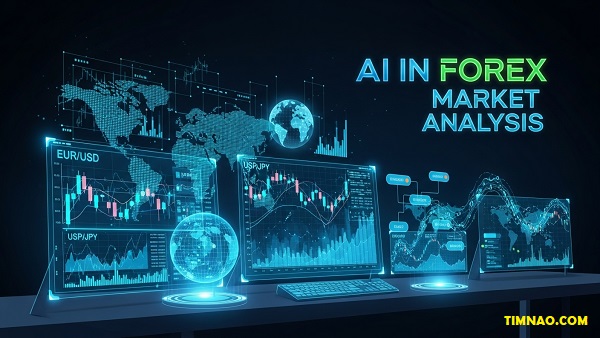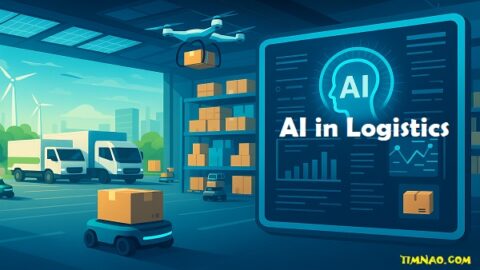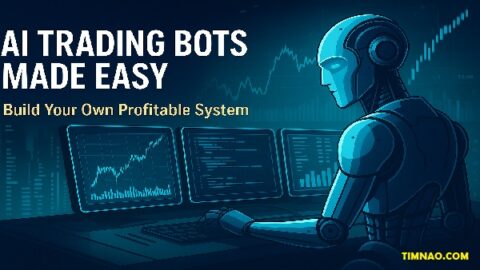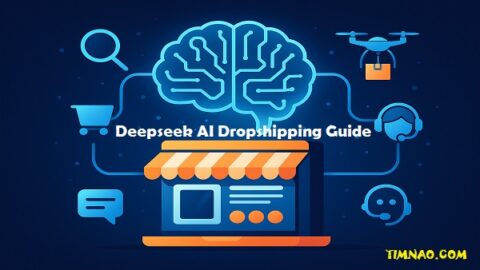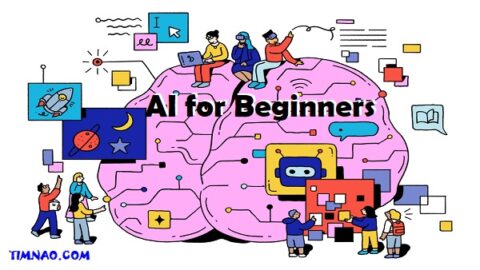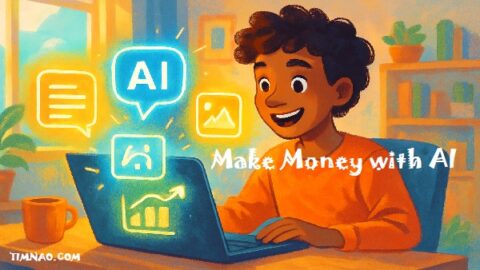📖 Smarter Wins, Fewer Losses: How AI in Forex Market Analysis Empowers Beginners 🌟
AI in Forex market analysis is no longer a futuristic concept—it’s the present reality reshaping how traders of all levels approach the world’s most liquid financial market. With over $6 trillion traded daily, the Forex market offers immense opportunities but also overwhelming complexity, especially for beginners. In the past, only large financial institutions with advanced tools could effectively process market data and anticipate trends. Today, thanks to the rise of Artificial Intelligence (AI) and Big Data in Forex, even individual traders can access the kind of insights once reserved for Wall Street.
Imagine being able to analyze global economic indicators, track real-time social media sentiment, and process years of historical price data—all in seconds. That’s what AI brings to the table. Whether you’re looking to predict currency movements, manage risks more effectively, or automate your trading strategies, AI in Forex trading empowers you with speed, accuracy, and insights that human analysis alone simply can’t match.
For beginners, this technology is a game-changer. It doesn’t replace human judgment—it enhances it, acting as a smart assistant that helps you trade with more confidence and fewer emotional mistakes. In this guide, we’ll break down exactly how AI and Big Data are transforming Forex, which tools you can start with, and how to put these powerful resources to work in your own trading journey.
Table of Contents
- 💡 Why AI in Forex Market Analysis Is a Game-Changer
- 🌍 Forex Basics Every Beginner Must Know
- 📊 Big Data in Forex: Turning Information Into Insights
- 🤖 How AI in Forex Trading Actually Works
- 🛠️ Beginner-Friendly AI Tools for Forex Trading
- ⚡ Real Success Stories Using AI in Forex
- 🛡️ AI-Powered Risk Management for New Traders
- 📈 Step-by-Step Guide to Start With AI in Forex Market Analysis
- ⚖️ Ethics, Challenges, and Regulations in AI Trading
- 🔭 Future of AI and Big Data in Forex
- 🙋 FAQs: Beginner Questions About AI in Forex Market Analysis Answered
- ✅ Key Lessons & Takeaways
💡 Why AI in Forex Market Analysis Is a Game-Changer
The Forex market is the largest and most liquid market in the world, with over $6 trillion traded daily. While this scale offers endless opportunities, it also means intense competition and constant volatility. For beginners, the challenge isn’t just learning how to trade — it’s keeping up with information that shifts by the second.
This is where AI in Forex market analysis makes all the difference. Unlike traditional manual trading, which depends heavily on charts, intuition, or delayed news updates, AI gives traders the ability to process vast amounts of data in real time. From price charts and news headlines to tweets and central bank speeches, AI systems can connect the dots in ways humans simply can’t.
Why traditional trading puts beginners at a disadvantage
Historically, Forex was dominated by big banks, hedge funds, and financial institutions. They had access to high-end data feeds, expensive analytics software, and teams of experts. Retail traders (individuals trading from home) often had to rely on:
- Manual chart reading.
- Basic technical indicators (like RSI or moving averages).
- Delayed news reports.
This created a huge gap. By the time small traders reacted, institutional players had already moved the market. AI helps close that gap by giving beginners access to fast, accurate, and affordable tools.
What makes AI a true game-changer
Here’s why AI in Forex trading is more than just another tool:
- Speed – AI algorithms can analyze thousands of currency pairs and market factors in seconds.
- Accuracy – Machine learning models continuously learn from past mistakes and improve predictions.
- Emotion-free trading – Unlike humans, AI doesn’t panic, overtrade, or hold losing positions out of hope.
- 24/5 monitoring – The Forex market never sleeps, and neither do AI bots. They watch opportunities round-the-clock.
- Pattern recognition – AI can spot hidden trends and correlations that even experienced traders might miss.
For beginners, this means less guesswork, less stress, and more structured decision-making. Instead of relying on “gut feeling,” you’re relying on data-driven insights.
A practical example
Let’s say you’re interested in trading EUR/USD. Without AI, you’d probably:
- Open a chart and look for trends.
- Check a few news headlines.
- Take a guess whether the Euro will rise or fall.
With AI, the process looks different:
- The system analyzes 10 years of EUR/USD historical data.
- It scans live economic news (like inflation data from Europe).
- It reviews Twitter sentiment about the European Central Bank.
- It then predicts: “There’s a 70% probability the Euro will strengthen today.”
Now, instead of guessing, you’re making an informed decision supported by real-time intelligence.
To understand how AI transforms trading, it’s important to first get the basics of Forex right. Let’s simplify the essentials.
🌍 Forex Basics Every Beginner Must Know
Forex might sound complicated, but at its core, it’s about exchanging one currency for another in hopes of profiting from price changes. The basics are straightforward once you break them down.
What is Forex trading?
- Forex = “Foreign Exchange.”
- You trade currency pairs, like EUR/USD or GBP/JPY.
- Each pair shows how much of one currency is needed to buy the other.
Example: If EUR/USD = 1.20, it means €1 = $1.20. If the rate later rises to 1.25, the Euro has strengthened against the Dollar. A trader who bought Euros earlier could now sell them for a profit.
Why Forex is unique compared to other markets
- Biggest market globally: More than $6 trillion traded daily.
- Runs 24 hours, 5 days a week: Starts Monday morning in Asia, ends Friday evening in New York.
- Decentralized: No single stock exchange; trades happen globally across banks, brokers, and online platforms.
- High liquidity: Prices move fast, offering opportunities every minute.
This accessibility is why beginners are drawn to Forex — but it’s also why discipline and knowledge are essential.
The players in Forex
Understanding who moves the market helps beginners see the bigger picture:
- Central banks – They influence currencies through interest rates and monetary policy. Example: The U.S. Federal Reserve raising rates often strengthens the Dollar.
- Commercial banks – They handle massive transactions for corporations and governments.
- Hedge funds & investment firms – They speculate in huge volumes, driving major price swings.
- Corporations – Multinationals trade Forex to protect themselves from currency risks (e.g., Apple hedging against fluctuations in the Yen).
- Retail traders – Everyday individuals like you and me, trading through online platforms.
What moves currency prices?
Currencies don’t move randomly. Several key forces drive price changes:
- Economic indicators: GDP growth, inflation, unemployment data.
- Interest rates: Higher rates usually attract investors, strengthening a currency.
- Geopolitical events: Wars, elections, or natural disasters create volatility.
- Market sentiment: If investors feel optimistic about a country’s economy, demand for its currency rises.
- Speculation: Traders buying or selling large amounts based on expectations can shift markets fast.
A beginner’s checklist before trading
If you’re new, don’t rush in. Here’s a simple checklist to prepare:
- Learn how to read a Forex quote (base vs. quote currency).
- Understand leverage — it can magnify both profits and losses.
- Practice with a demo account before risking real money.
- Follow economic calendars to know when major news is coming.
- Start small — trade micro lots until you’re comfortable.
Where AI fits into the basics
This is where AI in Forex market analysis ties back in. Beginners often struggle with:
- Information overload.
- Fear of missing out (FOMO).
- Holding losing trades too long.
AI helps by simplifying decisions. Instead of manually scanning dozens of news sources, AI condenses information into one clear insight. Instead of second-guessing where to place a stop-loss, AI calculates it based on volatility.
Now that you understand the fundamentals, the next step is to explore how Big Data in Forex supercharges AI and gives beginners access to professional-grade insights.
📊 Big Data in Forex: Turning Information Into Insights
When people hear the phrase Big Data in Forex, it often sounds intimidating. But at its core, Big Data simply means large amounts of information from many sources. In the Forex market, this includes everything from economic reports and central bank statements to social media chatter and live price movements.
For beginners, the challenge is not the lack of data—it’s that there’s too much of it. Imagine trying to track:
- Currency prices changing every second.
- News headlines about inflation or unemployment.
- Central bank interest rate announcements.
- Tweets reacting to political events.
No single trader can keep up with all of this at once. This is where Big Data tools, combined with AI in Forex market analysis, shine. They filter noise, highlight what matters, and turn overwhelming information into clear insights you can act on.
Where does Forex Big Data come from?
Some of the main data sources you’ll encounter include:
- Historical price data – Past market movements that help you backtest strategies.
- Economic indicators – Reports on GDP, inflation, and employment.
- News and media – Headlines that trigger market reactions within seconds.
- Social media sentiment – What traders and influencers are saying online.
- Transaction and order book data – Real-time buying and selling activity.
- Alternative data – For example, satellite images of shipping ports or online search trends that hint at economic health.
Each of these provides a piece of the puzzle. Combined, they give a full picture of what drives currency values.
The opportunities Big Data brings
If used correctly, Big Data gives beginners several advantages:
- Better decision-making: Instead of guessing, you rely on real market evidence.
- Faster reactions: Spot opportunities before the crowd does.
- Risk reduction: Identify early warning signals of volatility.
- Personalization: Tailor strategies to your own goals and risk tolerance.
For example, let’s say you’re trading GBP/USD. Economic data shows strong UK employment growth, while Twitter sentiment is positive about the Pound. AI analyzing this Big Data might alert you that GBP is likely to strengthen — giving you confidence to go long before prices rise.
Challenges to watch out for
Big Data is powerful, but it’s not perfect. Beginners should be aware of:
- Data overload: Too much raw information without AI filtering can paralyze you.
- Poor data quality: Inaccurate or outdated info leads to bad decisions.
- Costs: Some advanced data feeds aren’t free. Start with reliable free tools first.
- Privacy concerns: Trading platforms collect user data; always use trusted providers.
With Big Data feeding insights, the next question is — how does AI actually use this information to help you trade smarter? Let’s break it down.
🤖 How AI in Forex Trading Actually Works
AI might sound like a black box, but its role in Forex is easier to understand than you think. Simply put, AI in Forex trading is about using smart algorithms to analyze Big Data, spot patterns, and make predictions or even execute trades automatically.
Think of AI as a fast-thinking assistant that can process far more than any human brain could in real time. You still make the final call, but AI gives you better tools to work with.
The main ways AI is used in Forex
Here are the most common applications beginners should know about:
- Predictive analytics
- AI studies years of price history to forecast likely moves.
- Models like regression, decision trees, and neural networks are often used.
- Example: Predicting whether EUR/USD will rise or fall after a U.S. inflation report.
- Sentiment analysis
- Uses Natural Language Processing (NLP) to read news headlines, social media, or central bank statements.
- Determines if the tone is positive, negative, or neutral.
- Example: If online chatter about the Euro is strongly positive, AI might suggest bullish pressure ahead.
- Algorithmic trading (bots)
- Pre-programmed rules execute trades instantly.
- Bots remove emotional bias and stick to strategies.
- Example: A bot could automatically buy USD/JPY if it breaks above a moving average.
- Risk management
- AI monitors volatility and alerts you to dangerous conditions.
- Suggests where to place stop-loss or take-profit levels.
- Example: Warning you to reduce trade size before a major news event like Non-Farm Payrolls.
- Portfolio optimization
- AI balances your exposure across currencies.
- Helps diversify so you’re not overexposed to a single pair.
- Example: If you already hold several Dollar positions, AI might suggest shifting to EUR/JPY or AUD/NZD.
How it actually works step by step
Let’s walk through a simplified beginner-friendly scenario:
- Data collection – AI gathers price charts, economic reports, and sentiment data.
- Preprocessing – It cleans and organizes the information.
- Pattern recognition – Machine learning spots recurring signals (like how USD reacts to rate hikes).
- Prediction – The system estimates probabilities, e.g., “USD/CHF has a 65% chance of dropping.”
- Decision support – AI presents you with buy/sell/hold suggestions.
- Automation (optional) – Bots can execute trades based on these insights.
Notice that humans are still in control — AI helps, but you decide whether to act.
A practical beginner use case
Imagine you’re trading USD/JPY during a U.S. jobs report release:
- Without AI: You might guess based on charts or wait for news summaries (too late).
- With AI: The system instantly analyzes the report, detects stronger-than-expected job growth, checks market sentiment, and signals that USD is likely to strengthen. You act immediately.
This speed and clarity is what makes AI invaluable.
Tips for beginners using AI in Forex
- Start with demo accounts: Test AI bots without risking money.
- Don’t over-rely: AI isn’t a crystal ball; always use stop-loss.
- Focus on learning: Treat AI as a teacher — observe how it reacts to events.
- Keep strategies simple: Start with one or two currency pairs until you’re comfortable.
With this understanding of Big Data and AI, the next step is exploring the tools beginners can use right now to bring these concepts into real trading practice.
🛠️ Beginner-Friendly AI Tools for Forex Trading
When you’re just starting out, the idea of using AI in Forex trading might sound complicated or expensive. The truth? Many tools are beginner-friendly, affordable, and sometimes even free. The key is knowing where to start and choosing platforms that match your skill level.
MetaTrader 4 & MetaTrader 5 (MT4/MT5)
- What it is: The most popular Forex trading platforms in the world.
- AI features: They support Expert Advisors (EAs) — automated trading bots you can install or customize.
- Beginner benefit: You don’t need to code from scratch. Many EAs are available in the built-in marketplace, and you can test them on demo accounts.
- Pro tip: Start with free or low-cost EAs and practice risk management before moving to live accounts.
TradingView
- What it is: A web-based charting platform with powerful social features.
- AI features: Offers AI-powered scripts, alerts, and integrations for automation. You can also learn by following strategies shared by other traders.
- Beginner benefit: Its clean interface and community support make it ideal for learning technical and AI-driven analysis side by side.
- Pro tip: Use TradingView alerts combined with sentiment indicators for smarter entry points.
Broker-provided AI bots
Many modern brokers (e.g., eToro, IG, OANDA) now include AI-driven analytics or trading bots directly within their platforms.
- What it is: Built-in AI tools that analyze markets, suggest trades, or execute strategies.
- Beginner benefit: Zero setup — you simply activate them.
- Pro tip: Don’t blindly copy signals. Compare them with economic news to learn why the AI suggests a trade.
Python libraries (for DIY learners)
If you enjoy tinkering or want more control, Python offers powerful AI libraries:
- Scikit-learn for machine learning models.
- Pandas for data analysis.
- TensorFlow or PyTorch for advanced AI models.
- Beginner benefit: You can learn by running simple scripts shared online, without needing to be a professional coder.
- Pro tip: Start with small experiments, like building a script that predicts tomorrow’s EUR/USD trend using past 30-day data.
Cloud-based AI platforms
If you want to go beyond plug-and-play tools, platforms like Google Cloud AI and AWS SageMaker let you build and deploy custom models.
- What it is: Enterprise-level cloud AI services.
- Beginner benefit: These platforms offer tutorials and free credits for beginners, making them surprisingly accessible.
- Pro tip: Use them once you’re comfortable with Python basics; don’t jump straight into advanced cloud tools.
Practical beginner advice
- Start simple: Use MT4/MT5 bots or TradingView first.
- Stay safe: Test everything on demo accounts before going live.
- Learn by observing: Treat AI signals as lessons, not just orders. Ask, “Why did the AI suggest this trade?”
- Upgrade gradually: Move to coding and cloud platforms once you’re confident with basics.
Knowing the tools is one thing, but seeing how real traders use AI successfully is even more motivating. Let’s explore some real-world success stories.
⚡ Real Success Stories Using AI in Forex
Hearing how others have succeeded with AI in Forex market analysis can inspire and guide your own journey. These stories show what’s possible when humans and machines collaborate.
Hedge fund success story
One hedge fund integrated AI algorithms into its trading system to analyze years of historical price data. By combining predictive models with live news sentiment, the fund identified hidden patterns in USD/JPY and EUR/USD.
- Result: They increased annual returns while lowering risk.
- Lesson for beginners: If professionals rely on AI to find hidden insights, you can benefit too — even at a smaller scale.
Retail trader transformation
A part-time retail trader, overwhelmed by news and charts, started using an AI-powered Expert Advisor in MT5. The bot automatically paused trading during high-volatility events (like central bank meetings).
- Result: Losses dropped by 35% over six months.
- Lesson for beginners: AI can protect you from overtrading and emotional mistakes.
Institutional adoption
Large financial institutions now use AI to detect anomalies in transaction flows. For example, if unusual trading activity suggests a potential flash crash, AI alerts risk managers instantly.
- Result: Fewer catastrophic losses and more stable performance.
- Lesson for beginners: Even if you can’t run big-data systems, broker platforms now offer scaled-down versions of these safeguards.
AI-powered trading platforms
Several platforms like QuantConnect or Capitalise.ai allow traders to set up rules in plain English, such as: “Buy EUR/USD if sentiment is positive and RSI < 30.” The AI then executes automatically.
- Result: Everyday traders report more disciplined strategies.
- Lesson for beginners: You don’t need to master coding to use AI — plain-language platforms exist.
The bigger picture: human + AI collaboration
Across these cases, one theme is clear: AI didn’t replace human traders. Instead, it enhanced their decision-making. The most successful results came when traders combined:
- Human judgment (intuition, creativity, understanding context).
- AI insights (speed, data analysis, pattern recognition).
Beginners should see AI as a partner, not a substitute. Let it handle the heavy lifting while you focus on the big-picture strategy.
With tools and real-life examples in mind, the next focus will be on how AI strengthens risk management and helps beginners protect their capital while still growing their trading confidence.
🛡️ AI-Powered Risk Management for New Traders
If there’s one skill that separates long-term Forex survivors from those who burn out, it’s risk management. Many beginners enter the market thinking about profits first — but pros know that protecting capital is priority number one. And here’s the exciting part: AI in Forex trading now makes risk management smarter, faster, and less emotional.
Why beginners struggle with risk management
- Over-leverage: Using too much borrowed money amplifies losses as quickly as profits.
- Emotional trading: Fear and greed often lead to poor decisions, like chasing losses.
- Improper stop-losses: Beginners place stop-loss orders too close (stopping out too often) or too far (risking too much).
- Ignoring diversification: Focusing only on one currency pair increases exposure.
AI addresses these weaknesses by analyzing market volatility, historical data, and real-time conditions to guide safer trading practices.
How AI enhances risk management
- Smart stop-loss and take-profit levels
- Instead of random guesswork, AI calculates levels based on volatility and market structure.
- Example: If GBP/USD is unusually volatile, AI may suggest a wider stop to avoid being prematurely stopped out.
- Dynamic position sizing
- AI adjusts trade size based on account balance and risk tolerance.
- Example: If your account has $1,000 and you only want to risk 1% per trade, AI can ensure no trade exceeds $10 risk.
- Early warning alerts
- AI detects unusual patterns or sudden liquidity shifts and warns you before markets spike.
- Example: If AI notices that traders are rapidly moving into safe-haven currencies like the Yen, it can suggest reducing Dollar exposure.
- Diversification checks
- AI scans your portfolio and flags when trades are too concentrated.
- Example: If you already hold multiple USD positions, it might advise balancing with a non-USD pair like AUD/JPY.
- Volatility forecasting
- Machine learning predicts when markets may get turbulent.
- Example: Ahead of a U.S. Federal Reserve announcement, AI may signal to reduce position sizes or stay out temporarily.
Practical advice for beginners
- Always define risk first: Ask, “How much can I afford to lose?” before thinking of potential gains.
- Use AI as a safety net: Let it calculate stop-loss/take-profit, but confirm with your own analysis.
- Don’t over-rely: AI is powerful, but no system is 100% accurate — always keep a margin of safety.
- Review regularly: AI learns over time, but so should you. Review trades to see what worked and why.
Once you know how AI protects your capital, the next step is learning how to actually get started with AI in Forex market analysis.
📈 Step-by-Step Guide to Start With AI in Forex Market Analysis
Getting started with AI doesn’t mean you need to be a programmer or a Wall Street pro. Beginners can adopt AI step by step, combining free resources, demo accounts, and simple strategies. Here’s a roadmap to help you begin.
Step 1: Learn Forex fundamentals
Before touching AI, you need a solid grasp of basics:
- How to read currency pairs (EUR/USD, GBP/JPY).
- What leverage and margin mean.
- How economic indicators move markets.
- Basics of technical analysis (candlesticks, support/resistance).
📌 Tip: Use free resources like Babypips School of Pipsology to build a foundation.
Step 2: Choose your AI-friendly platform
Start with platforms that support AI tools:
- MetaTrader 5: Install Expert Advisors (EAs) for automated trading.
- TradingView: Use AI-powered scripts and alerts.
- Broker platforms: Many brokers now include AI bots or sentiment tools.
📌 Tip: Open demo accounts first — never start with real money until you’re comfortable.
Step 3: Experiment with AI tools
Here are three beginner-friendly options:
- Sentiment analysis indicators: Track whether traders are bullish or bearish.
- AI trading bots (EAs): Automate simple strategies like moving average crossovers.
- Risk calculators: AI tools that size your trades based on account balance.
📌 Tip: Start small — test one tool at a time.
Step 4: Backtest before you trade live
- Use historical data to see how an AI strategy would have performed in the past.
- Learn how strategies behave in different conditions (trending vs. sideways markets).
📌 Tip: Backtesting in MetaTrader is free and helps you build trust in your tools.
Step 5: Go live with micro trades
Once you feel confident, test with very small amounts:
- Trade micro lots (0.01 lot = $1,000 position size).
- Risk no more than 1–2% of your account per trade.
📌 Tip: This way, even if you lose, you’re paying for “cheap tuition” instead of blowing your account.
Step 6: Combine AI with human judgment
AI is excellent for crunching data, but human intuition still matters.
- Example: AI may suggest buying EUR/USD, but you know an ECB meeting is hours away. Waiting may save you from a surprise.
📌 Tip: Use AI as a decision-support system, not as a crystal ball.
Step 7: Review and refine
The real power of AI lies in continuous learning.
- Keep a trading journal.
- Note when AI signals worked or failed.
- Adjust settings over time.
📌 Tip: Treat AI as both a tool and a mentor — study how it reacts to events to deepen your own skills.
A realistic beginner timeline
Here’s what your first 3–6 months with AI in Forex might look like:
- Month 1: Learn Forex basics, open demo accounts.
- Month 2–3: Test AI bots and sentiment tools on demo.
- Month 4–5: Backtest strategies and refine.
- Month 6: Start micro trades live, keep risks low.
By following this path, you’re building both knowledge and confidence, instead of rushing in unprepared.
Once you’ve set up your AI trading workflow, it’s equally important to understand the ethical and regulatory side of AI in trading — and that’s what we’ll cover next.
⚖️ Ethics, Challenges, and Regulations in AI Trading
As exciting as AI in Forex trading sounds, it isn’t without risks. Traders — especially beginners — need to be aware of the ethical concerns, challenges, and regulatory frameworks that come with it. Knowing these early helps you trade responsibly and avoid future headaches.
Common challenges with AI in Forex
- Data quality issues: If the AI is trained on incomplete or biased data, its predictions will be unreliable. Garbage in = garbage out.
- Overfitting: Some AI systems perform brilliantly in backtests but fail in real markets because they’re too optimized for the past.
- Market efficiency: The Forex market is highly competitive. Once an AI strategy becomes popular, its edge often fades quickly.
- Accessibility gap: While tools are more affordable now, advanced AI setups still favor institutions with bigger budgets.
Ethical concerns in AI trading
- Fairness – If only large players access cutting-edge AI, retail traders may face a disadvantage.
- Transparency – Many AI systems are “black boxes,” leaving traders unsure why a signal was given.
- Market manipulation – Misuse of AI for practices like spoofing or flash crashes could destabilize markets.
- Over-reliance – Blindly trusting AI without understanding its limits can lead to reckless behavior.
Regulatory landscape
Regulators are catching up with AI-driven trading. Some key points:
- Data protection laws (GDPR in the EU, CCPA in California) ensure traders’ personal data is handled safely.
- Financial authorities like the U.S. SEC or the UK FCA monitor algorithmic trading for compliance with fairness and transparency rules.
- Broker oversight: Reputable brokers follow strict rules about offering automated tools responsibly.
How beginners can stay compliant and safe
- Choose brokers regulated by strong authorities (FCA, ASIC, CFTC, etc.).
- Don’t buy shady “guaranteed win” AI bots online — if it sounds too good to be true, it is.
- Understand that no AI can remove risk completely. Use it as an aid, not a promise.
- Stay updated on your region’s trading regulations — rules evolve quickly.
While regulations protect fairness, the future of AI and Big Data in Forex promises even more powerful opportunities. Let’s peek ahead.
🔭 Future of AI and Big Data in Forex
AI and Big Data are evolving rapidly. For beginners, this means new tools will keep becoming easier to use, cheaper to access, and more powerful. Here are some trends shaping the next decade.
Explainable AI (XAI)
Traders increasingly demand to know why AI suggests a trade. Explainable AI will make signals more transparent, showing the factors behind predictions.
- Example: Instead of just saying “Buy EUR/USD,” future AI may explain: “Predicted rise due to stronger EU inflation and positive market sentiment.”
Quantum computing
Quantum computers, still in early development, could analyze millions of trading scenarios at once. This would make AI predictions even faster and more accurate.
- Impact for beginners: Expect more precise forecasts and reduced lag between news events and signals.
Blockchain integration
Blockchain could bring more transparency and security to Forex:
- Smart contracts may execute trades automatically once conditions are met.
- Decentralized Forex platforms could reduce broker fees and manipulation risks.
- Immutable records mean all trades are traceable, increasing trust.
Personalized AI trading assistants
Soon, AI won’t just crunch data; it will act like a coach. Personalized assistants will:
- Learn your risk profile.
- Suggest strategies suited to your style.
- Warn you when your emotions take over.
Imagine an app saying: “You’ve had three losing trades today. It’s time to pause before making impulsive decisions.” That’s where we’re heading.
Now that we’ve covered the present and future, let’s answer some beginner FAQs about AI in Forex market analysis that you might be wondering about right now.
🙋 FAQs: Beginner Questions About AI in Forex Market Analysis Answered
1. Do I need to know programming to use AI in Forex trading?
No. Many platforms like MetaTrader and TradingView offer ready-made bots and indicators. Programming skills help if you want to customize, but beginners can start without coding.
2. Can AI guarantee profits in Forex?
Absolutely not. Forex always carries risk. AI improves decision-making and consistency but cannot remove uncertainty. Think of AI as a co-pilot, not a magic money machine.
3. How much money do I need to start using AI?
Many brokers let you open accounts with as little as $100. You can also test AI bots on demo accounts with zero real money involved. Start small — focus on learning before scaling up.
4. Are AI trading bots safe to use?
It depends. Bots from regulated brokers or trusted marketplaces are generally safe. Avoid unverified bots sold with unrealistic promises. Always test in demo mode first.
5. Can AI help me avoid emotional trading mistakes?
Yes. One of AI’s biggest strengths is removing human emotions from trading. Bots don’t panic, chase losses, or get greedy — they stick to rules.
6. How do I know if my AI strategy works?
Use backtesting on historical data and forward testing in demo accounts. Never trust a strategy until you’ve seen how it performs under different conditions.
7. Is AI trading legal?
Yes, in most regions, but it must follow regulations. Always trade with a licensed broker to stay compliant.
✅ Key Lessons & Takeaways
- AI in Forex market analysis helps beginners trade smarter by filtering noise, spotting patterns, and removing emotions.
- Big Data in Forex — from economic reports to social media sentiment — powers AI predictions with broader context.
- Risk management first: AI helps set smarter stop-losses, position sizes, and portfolio diversification.
- Start small: Use demo accounts, micro lots, and simple bots before scaling up.
- Ethics and safety matter: Avoid shady tools, use regulated brokers, and understand AI’s limits.
- The future is bright: Expect explainable AI, blockchain integration, and personal trading assistants to reshape the landscape.
- Human + AI > AI alone: The best results come when you combine AI’s speed with your own judgment and strategy.
📌 Disclaimer
The information in this article is provided for educational and informational purposes only. It should not be interpreted as financial advice, investment recommendations, or a guarantee of results. Forex trading carries a high level of risk, and it may not be suitable for all investors. Leveraged trading can work both for and against you, and there is always a possibility of losing more than your initial investment.
While we’ve highlighted how AI in Forex market analysis, AI in Forex trading, and Big Data in Forex can help improve decision-making, these technologies are not foolproof. No system, tool, or strategy can predict market movements with complete accuracy. Past performance, whether from AI models or trading strategies, does not guarantee future outcomes.
Before trading with real money, beginners should:
- Practice on demo accounts.
- Understand the basics of Forex trading and risk management.
- Consult with a licensed financial advisor if unsure.
We are not responsible for any financial losses or damages resulting from the use or reliance on the information shared in this article. Always trade responsibly and within your means.

